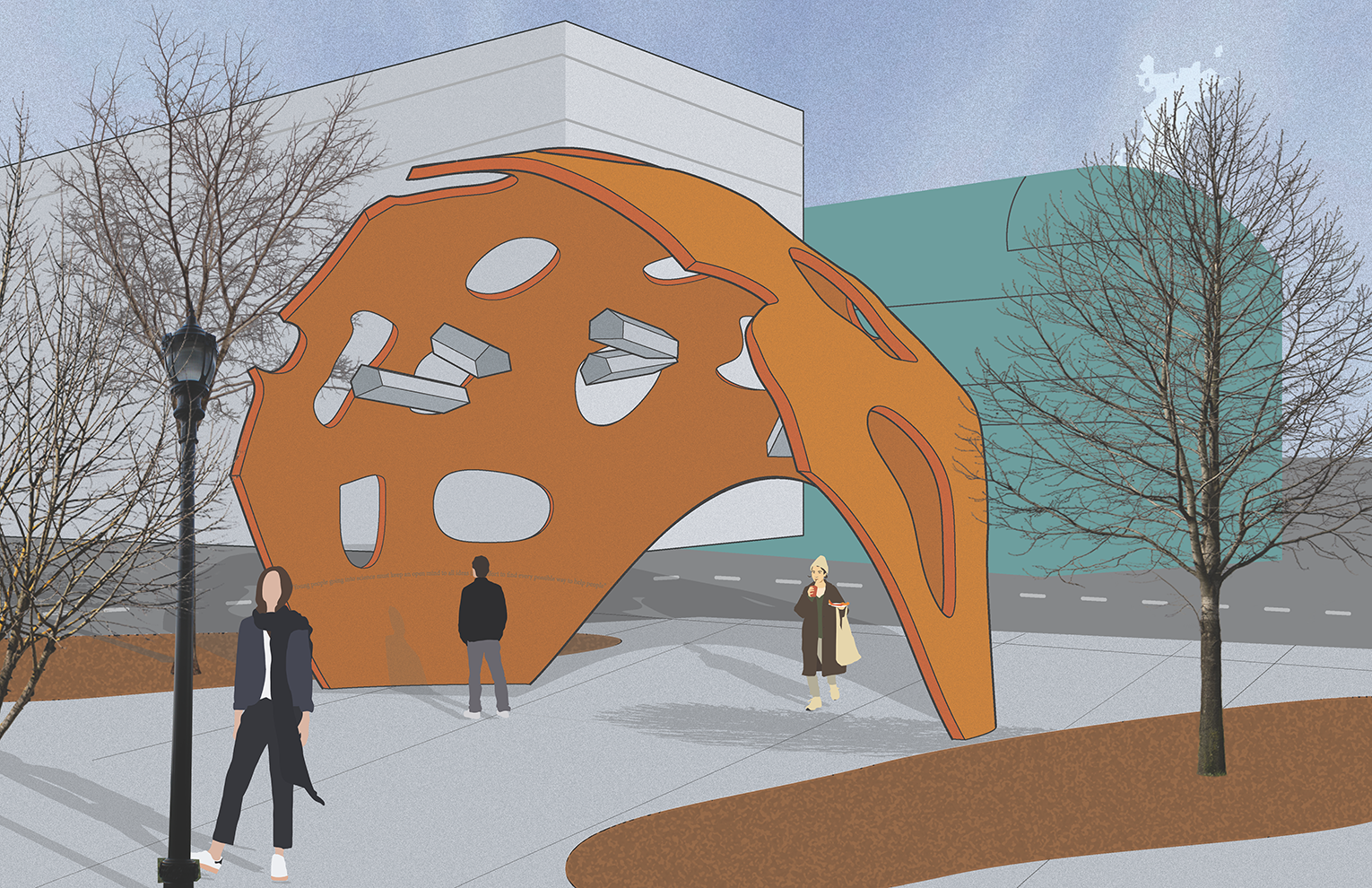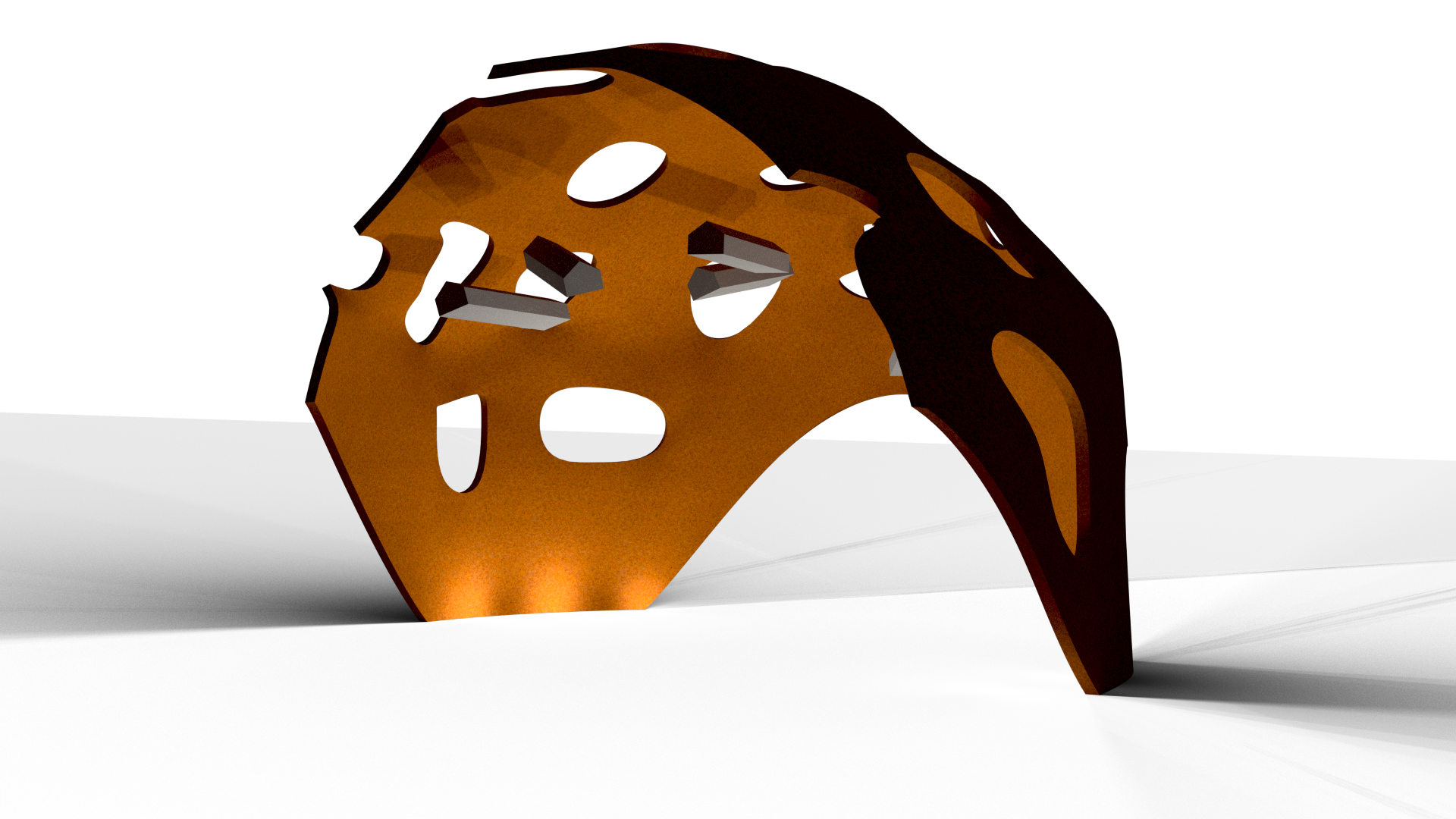Irene Uchida Memorial
2020
digital
Irene Uchida and Canadian Japanese
internment during WW2 were chosen as subjects due to their lack of
representation in the national memorial landscape, as well as to
increase awareness of the influence of women and people of color in the history
of STEM fields.
The monument uses as a starting point the stark forms of identical, boxy barracks in Japanese internment camps, and the oppressive feeling of confinement which expressed by the use of a massive shell covering the monument space. To convey a sense of destabilizing and overcoming the oppression of the camps, the buildings are portrayed suspended in mid-air as if in free-fall, and the shell is shown to be dissolving and coming apart, allowing light to enter the space beneath The organic forms of the openings allude to Uchida's work in the field of biology, and the interplay of light and shadow on the interior of the space is considered a key feature of the memorial.
The shell of the monument would be made of Corten steel, and the suspended forms representing the barracks would be cast in concrete. The barracks would be fixed to the shell via steel cables or rods, though these elements have not been presented in the renderings. The memorial would be lit at night by lights built into the pavers, along the interior walls, and should be placed and tuned with consideration to the shadows that will be cast upwards by the barracks.
The monument uses as a starting point the stark forms of identical, boxy barracks in Japanese internment camps, and the oppressive feeling of confinement which expressed by the use of a massive shell covering the monument space. To convey a sense of destabilizing and overcoming the oppression of the camps, the buildings are portrayed suspended in mid-air as if in free-fall, and the shell is shown to be dissolving and coming apart, allowing light to enter the space beneath The organic forms of the openings allude to Uchida's work in the field of biology, and the interplay of light and shadow on the interior of the space is considered a key feature of the memorial.
The shell of the monument would be made of Corten steel, and the suspended forms representing the barracks would be cast in concrete. The barracks would be fixed to the shell via steel cables or rods, though these elements have not been presented in the renderings. The memorial would be lit at night by lights built into the pavers, along the interior walls, and should be placed and tuned with consideration to the shadows that will be cast upwards by the barracks.





